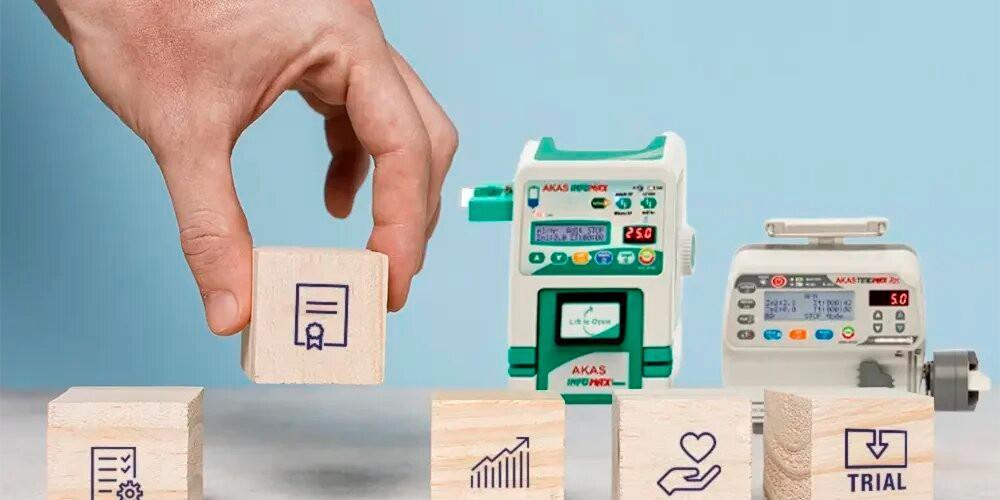2025 Trends in Infusion Pump Safety

Hospitals and clinics rely heavily on Infusion Pumps for delivering accurate medication doses. In 2025, the focus is shifting more than ever toward advanced safety features that protect patients and support healthcare staff. These innovations are setting new standards in performance, usability, and clinical reliability across departments.
The following safety trends reflect the evolving priorities of healthcare professionals and manufacturers working together to build safer, smarter infusion systems.
1. Closed-Loop Drug Delivery Integration
-
Infusion Pumps now integrate with EMR systems to automate dose adjustments.
-
This reduces manual input errors and supports real-time decision-making.
-
Clinical outcomes improve when infusion data syncs directly with patient records.
2. Smart Alarms with Reduced Alert Fatigue
-
Modern devices filter non-critical alerts to reduce false alarms.
-
Prioritised notifications ensure clinicians respond to true risks promptly.
-
Enhanced audio-visual indicators guide faster and safer interventions.
3. AI-Powered Dose Monitoring
-
Artificial intelligence monitors trends and detects anomalies in dosing.
-
Predictive analytics assist in identifying potential infusion errors.
-
The system alerts staff before patient risk levels escalate.
4. Enhanced Drug Libraries with Auto-Updates
-
Comprehensive drug libraries support safe infusion rate presets.
-
Auto-updating software ensures compliance with latest protocols.
-
This trend minimises programming errors and enhances medication safety.
5. Lockout Mechanisms for High-Risk Medications
-
Advanced Infusion Pumps include access controls for critical drugs.
-
Password-protected features limit dosage adjustments to authorised users.
-
This reduces risks of accidental overdosing in sensitive patient cases.
6. Real-Time Wireless Monitoring
-
Devices now support live monitoring through hospital networks.
-
Clinicians receive updates on infusion status remotely and instantly.
-
This real-time oversight enhances both safety and workflow efficiency.
7. Error Logging for Incident Analysis
-
Pumps automatically log deviations, interruptions, and alerts.
-
Healthcare teams use this data to refine training and response times.
-
Safety incidents can be reviewed to prevent future occurrences.
8. Anti-Free Flow and Occlusion Detection
-
Built-in mechanisms prevent uncontrolled medication delivery.
-
Improved pressure sensors offer faster occlusion detection.
-
Both features are vital in paediatric and high-risk adult patients.
9. Durable, Tamper-Proof Construction
-
Tamper-resistant casings prevent unauthorised access or manipulation.
-
Pumps are now designed to withstand demanding clinical environments.
-
Consistent device integrity ensures long-term reliability.
10. Touchscreen Safety Interfaces
-
Modern Infusion Pumps feature intuitive, clutter-free displays.
-
Colour-coded data and guided programming reduce human error.
-
Touch navigation is more responsive and user-friendly in emergencies.
11. Auto-Dose Calculation Tools
-
Devices help calculate infusion rates based on patient weight and dosage.
-
Built-in tools ensure precision for drugs with narrow safety margins.
-
This supports safe infusion planning, especially in paediatric care.
12. Safer Battery Backup Systems
-
Backup systems now offer extended battery life during power cuts.
-
Fail-safe alerts warn before battery drops to critical levels.
-
Hospitals gain time to act, avoiding disruptions in patient therapy.
13. Multi-Language Support for Diverse Facilities
-
Newer Infusion Pumps offer multilingual UI options for diverse teams.
-
This feature enhances accuracy in multicultural clinical settings.
-
Language flexibility reduces miscommunication during high-pressure care.
14. Remote Diagnostics and Software Updates
-
Pumps now support remote troubleshooting by biomedical teams.
-
Software can be updated without removing the device from service.
-
This keeps safety features current and reduces downtime.
15. User-Centric Safety Training Modes
-
Integrated simulation modes allow hands-on practice without real drugs.
-
This empowers nurses and clinicians to train safely on the device itself.
-
Faster onboarding leads to fewer programming errors in live scenarios.
16. Integrated RFID/Barcode Scanning
-
Infusion Pumps now scan patient IDs and medication barcodes.
-
This ensures that the right drug reaches the right patient every time.
-
Automated checks limit human error and increase traceability.
17. Cloud-Based Device Management
-
Administrators monitor and manage all pumps across the facility remotely.
-
Cloud analytics offer insights into performance and safety compliance.
-
Predictive maintenance helps avoid device-related interruptions.
18. Dual-Channel Pumps for Critical Infusions
-
Dual-line devices support simultaneous infusions with independent controls.
-
These are ideal for high-dependency units and complex medication regimens.
-
Advanced logic ensures no interference between concurrent treatments.
19. Regulatory Compliance & Global Safety Standards
-
Devices in 2025 adhere to ISO, CE, and FDA guidelines.
-
Global safety certifications ensure cross-border trust in device performance.
-
Hospitals benefit from higher accountability and transparent quality metrics.
20. Seamless Integration with Hospital IT Infrastructure
-
Infusion Pumps now link to central monitoring, EMRs, and billing systems.
-
This integration ensures unified data flow and operational clarity.
-
A connected system reduces administrative errors and enhances patient safety.
Conclusion
Infusion Pump technology in 2025 is focused on one clear goal—enhancing patient safety while supporting hospital efficiency. These advancements reflect a global movement toward smarter, connected, and more responsive care environments.
Hospitals and clinics that adopt these next-gen devices not only protect patients but also empower staff with the tools they need to deliver precision therapy. From artificial intelligence to ergonomic design, safety is no longer just a feature—it's at the heart of every innovation.
Akas Infusion, currently the largest manufacturer, aims to become the global leader in Syringe and Infusion Pumps, delivering medical technology that meets the highest standards of care.








